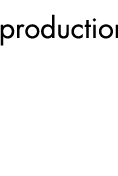|
This newsletter is a result of Impact's collective years of experience in publication services helping corporate clients develop effective, creative communication tools. Please feel free to forward this email to others within your organization. Effective Newsletters, Issue 4Layin' it Out Creating a newsletter layout that communicates effectively By Dave Gillaspie President, Impact Productions 847/530-3214 • http://www.impact.ws You’re working on a newsletter. You’ve determined to whom you are writing, written stories that will be informative and interesting to your target audience, collected compelling photos with helpful captions, and contacted your printer and mailing house to establish a production schedule. Great--but you’re not quite finished! You could do everything right up to this point and still end up with an amateurish-looking newsletter. Even the best content can be spoiled by a bad layout. First, you need a good name for your newsletter, along with a well-designed masthead. The masthead is the design element that contains the name of your newsletter. It is normally positioned at the top of the first page and sets the visual tone for the rest of the newsletter. The masthead design should remain consistent from issue to issue. It helps readers recognize your publication. Next, strike a balance between the amount of copy and the number of photos. Too much copy can intimidate your audience. Too many photos can make your publication look like a high school yearbook, and chances are good that your readers will not take it seriously. Aim for 1 to 3 photos on a single 8-1/2 by 11 inch page. Headlines are another important newsletter component. If they are well written they can give a reader a quick overview of the contents of the newsletter with just a glance. Something to avoid is “tombstoning.” Tombstoning occurs in the layout when the headlines from two or more stories line up, generally at the top of the page, like tombstones lined up in a cemetery. Good layout will move the reader’s eyes comfortably across the page. The eye naturally moves in a "Z" pattern, starting at the top of the page from left to right, then moving to the lower left and ending in the lower right hand corner. The positioning of headlines and photos should help the reader’s eye move in this manner. Limit the number of articles that continue or jump to other pages. If you must continue an article onto another page, place the continuation on a later page and make sure that you have numbered the pages in your newsletter. For example, if your article begins on page three, conclude the article on page four or later (not earlier) in your publication. Do your best to contain an article to a single page or a single spread. These are just a few simple tips to help you create a newsletter that communicates your company’s message more effectively, both through what it says and how it greets the eye. What can we do to help you? Just email me at dave@impact.ws or call 847/530-3214. Topics Privacy Reprint
Permission Impact
Productions Want
to look good? Dave Gillaspie |
|
||




